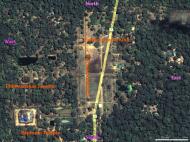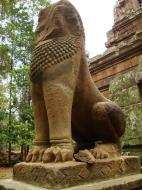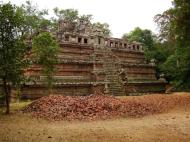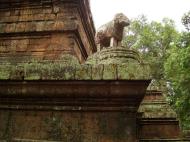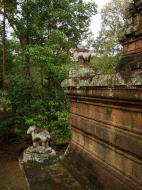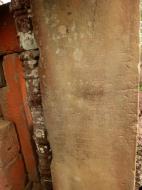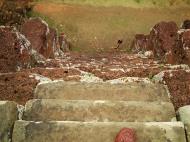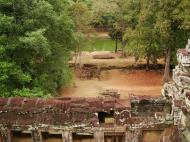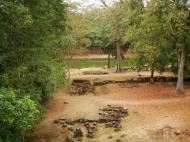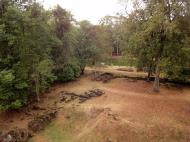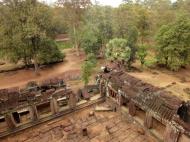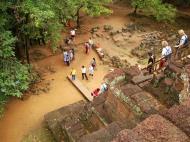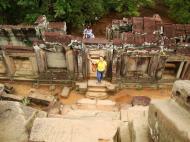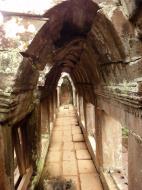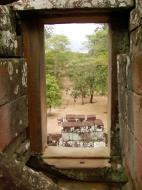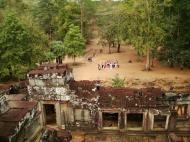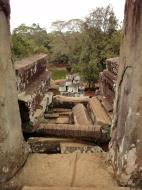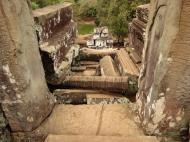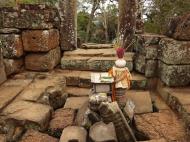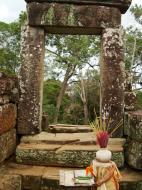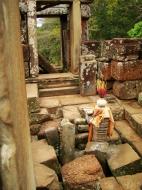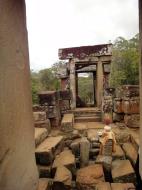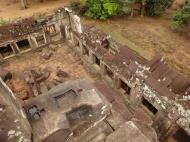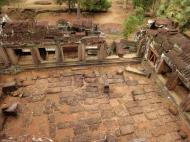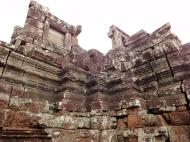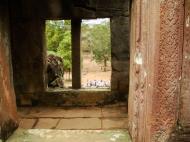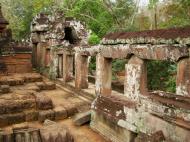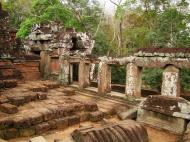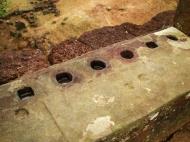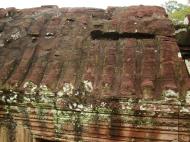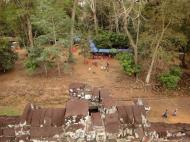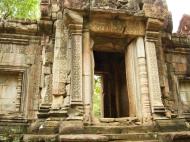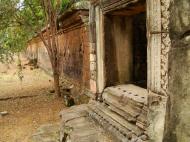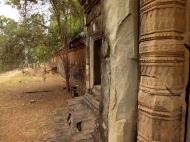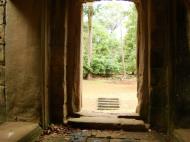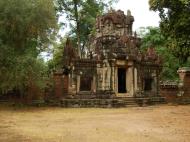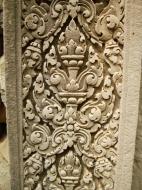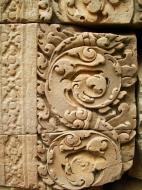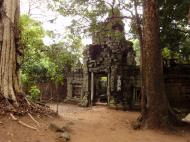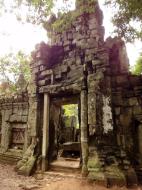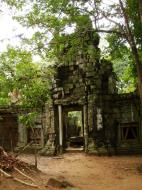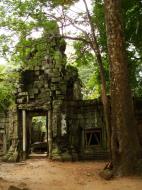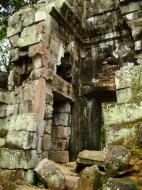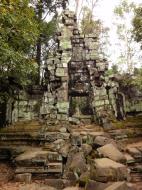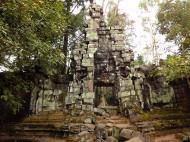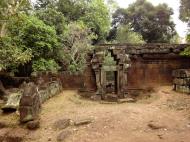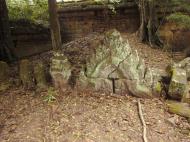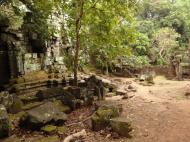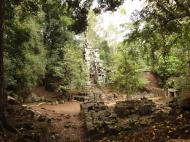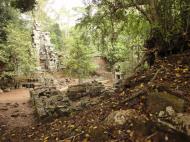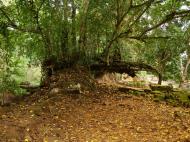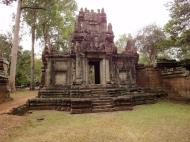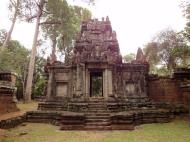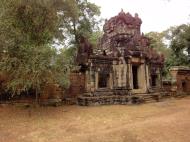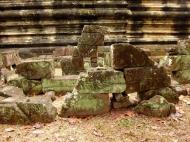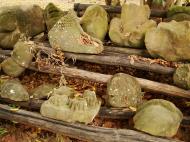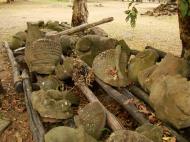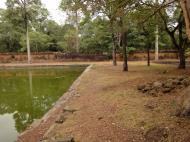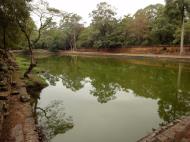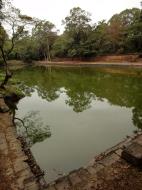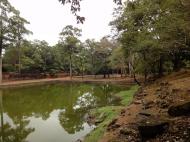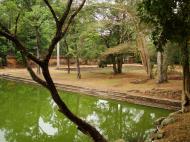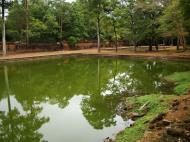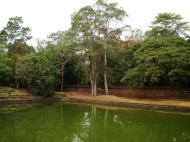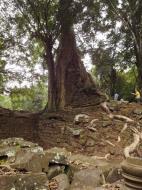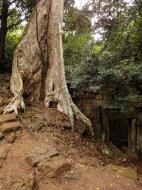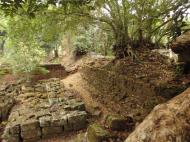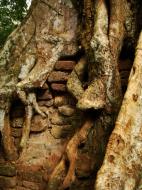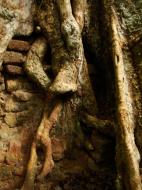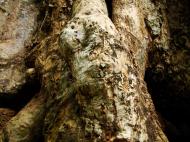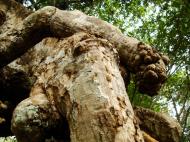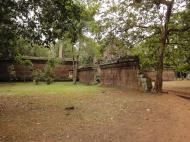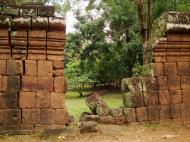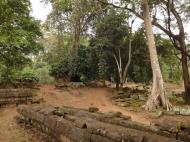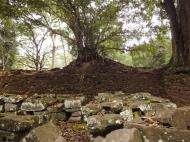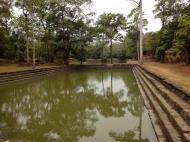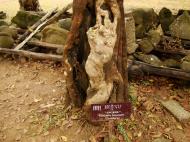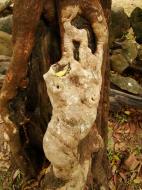Phimeanakas ‘celestial temple’ and Royal Palace
Phimeanakas, Prasat Phimean Akas, celestial temple or Vimeanakas, Prasat Vimean Akas at Angkor, Cambodia, is a Hindu temple in the Khleang style, built at the end of the 10th century, during the reign of Rajendravarman (from 941-968), then rebuilt by Suryavarman II in the shape of a three tier pyramid as a Hindu temple.
According to legend, the king spent the first watch of every night with a Naga girl in the tower, during that time, not even the queen was permitted to intrude.
Only in the second watch the king returned to his palace with the queen.
If the naga who was the supreme land owner of Khmer land did not show up for a night, the king's day would be numbered, if the king did not show up, calamity would strike his land.
The Khleangs are two buildings of unknown purpose on the east side of the Royal Square in Angkor Thom, Cambodia, located just behind the twelve towers of Prasat Suor Prat and separated by the royal route that leads from the Royal Palace to the Victory Gate.
They have given their name to the Khleang style, which is characterised by relatively simple lintels with a central kala.
Other buildings in the style are Phimeanakas and Ta Keo.
The North Khleang was built in wood under Rajendravarman II and then rebuilt in stone by Jayavaraman V, probably before the construction of the South Khleang.
The Khleangs are unremarkable upon close inspection but picturesque from a distance, standing among the Prasat Suor Prat.
Rajendravarman II
Rajendravarman II was the king of the Khmer Empire (region of Angkor in Cambodia), from 944 to 968.
Rajendravarman II was a nephew of former king Yasovarman I. His principal monuments, located in the Angkor region of Cambodia's Siem Reap province, are Pre Rup and East Mebon.
The king claimed links to the royal line of the Chenla state that had its capital at Bhavapura (the city's location is debated) and predates the start of the Khmer empire in 802 A.D. Inscriptions say that the Khmer empire under his tutelage extended to southern Vietnam, Laos and much of Thailand and as far north as southern China.
An inscription at Pre Rup relates that Rajendravarman II was a great warrior, his sword frequently blood-stained, his body as hard as a diamond.
Though the king punished the guilty, the inscription says, he had an ocean of compassion for the innocent.
Many scholars believe that Rajendravarman II instituted a system of centralized administration, establishing more direct control over a collection of princes who had been largely independent at their estates in the provinces.
Rajendravarman II led fighting against the rival state of Champa in the east, and in 950 A.D. seized as booty a gold statue in the temple of Po Nagar there.
Rajendravarman II was succeeded by his 10-year-old son, who reigned as Jayavarman V.
Phimeanakas ‘celestial temple’ and Royal Palace, Siem Reap, Cambodia Map
 Editor for Asisbiz: Matthew Laird Acred
Editor for Asisbiz: Matthew Laird Acred
If you love our website please add a like on facebook
Please donate so we can make this site even better !!
